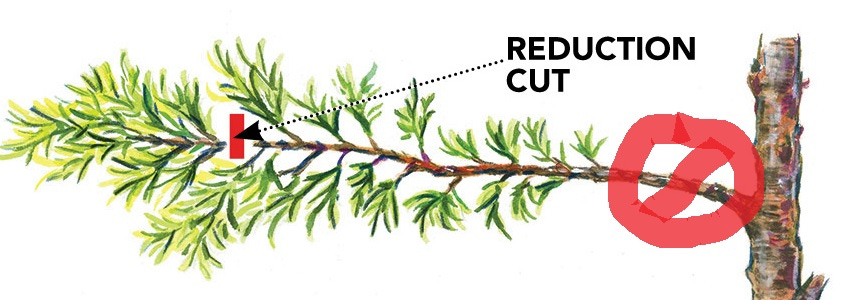Thank you for joining my Q&A! Please understand that without the opportunity to visit your yard or garden, I won’t be able to provide a complete answer but I will certainly do my best!
When is a good period to plant hydrangeas?
I’m not sure what climate you live in but, the goal is to avoid extreme heat or frost. Your best bet is Fall or early Spring (when you sure the risk of frost has passed). Once the Hydrangea’s root system is more established, it will be much more prepared to deal with weather-related stress.
It’s important to remember that hydrangeas are sensitive to pH- for example, hydrangeas have an amazing deep blue color on Cape Cod where I spend the summer- this is because the soil tends to run at a higher acidity.
Fun fact about hydrangeas- in some Asian cultures, they use hydrangeas for herbal teas.
My wife wants to cut back a overgrown arborvitae in the winter. Now my problem is will it ever grow back to its original shape?
Arborvitaes are fantastic screening plants. They are also pretty tough and can tolerate pruning. Just keep in mind, a little goes a long way- I wouldn’t remove more than say 20% at one time. Because Arborvitae is a conifer, it generally will not produce new growth from the older wood- so make sure you stay within the “live” area foliage.
Arborvitae has a fun backstory- the “Tree of Life” in Latin got its nickname because malnourished explorers would use the needles to make “tea” that provided the Vitamin C necessary to ward off scurvy!
Was walking through a public park and noticed these rose plants had been buried. What’s the deal?
Excellent question- you must be in an area that can have chilly winters and yes, this can look a bit odd! Depending on the species, roses can be susceptible to cold and frost. An easy solution is to provide insulation for the wintertime and one common way is to use soil/compost to build a “blanket” around the plant. You can also find man-made rose “guards” at your local home and garden centers. It looks like this park is doing it the old fashion way. Another tip to get roses ready for the winter is to make sure you cut off any fertilizer treatments in late summer so the plant is properly dormant when winter arrives.
What’s the best way to keep my driveway and walkways safe in the winter without damaging the ecosystem around my home?
The traditional salt application is a simple, cheap and effective way to eliminate ice in your driveways and sidewalks but it does have its drawbacks. It’s corrosive and can irritate your skin and your pets’ paws. It also ends up making its way into groundwater, altering its chemistry. If you have plants and grass near heavily treated areas, they can also be collateral damage.
I would have two suggestions for someone looking for alternatives—one would be to blend your salt/ ice melt with sand to lower the salt burden and add some traction to your driveways. Also, there are some more earth friendly alternative ice melts out there- I’ve noticed “Safe Paw” mentioned multiple times by our clients. I’ve also seen some other, unusual ideas to naturally remove ice including alfalfa and beet juice!
If you want to see what our crew is up to off camera or if you are looking for a landscape contractor in the greater Boston area- make sure you visit https://www.kandrlandscape.com





Hi Roger. I live in Southeast Texas (Houston) to be exact. I have a crepe myrtle that has gotten to be a massive bush. What would you recommend for cutting it back and maintenance for it throughout the year?
Hi Roger, we live in Northern California and have a smaller yard. 5 years ago we planted 2 Scarlet Sentinels, one has done great, the other about half size. The smaller one gets less full sun and backs up to our neighbors Bay Laurel tree (30’ blocking the pm sun). Last year I further exposed the root flare (ATOH recommendation), but still no growth spurt. I read that a Laurel emits an oil that stunts the growth of adjacent plants, and most things struggle to grow there. Any thoughts or recommendations to help growth in that area?